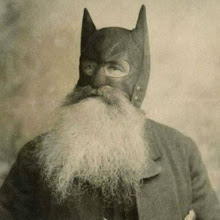Lucky Jim

Few memoirs make me wistful about my life, but James Wolcott's did. I wasn't sure I could love NYC more than I do, but Jim deepened my affection.
Lucking Out: My Life Getting Down and Semi-Dirty in Seventies New York is an exploding time capsule, a torrent of images that can overwhelm you, even if you get the countless references. It's also an elegy to a lost literate time, when words could cut through rock and reshape landscapes.
It helps to have your story bracketed by Norman Mailer and Pauline Kael. Mailer put young Jim in a position to realize his potential. Kael gave Jim guided tours as his talent took form.
Kael figures most prominently in Lucking Out. The bohemian film critic who crashed the New Yorker had a serious effect on Jim. Kael not only inspired his criticism, she showed him the professional ropes, grooming Jim for the career he has since enjoyed.
His love and respect for her is evident and touching. In lesser hands, these memories might become maudlin. But Jim finds the right balance. At times he and Kael resemble a two-reel comedy team, a broken city serving as their Hal Roach lot. They trade wisecracks while walking into the horizon, engulfed by graffiti and sirens.
It's tempting, in this glass tower age, to romanticize Seventies New York. Yet Jim shows it wasn't all glorious grunge. The city was dirty, mean, cheap. Teen hookers on the West Side; bat-wielding gay bashers; Times Square's porn squalor before Disney's invasion. As crass as modern Manhattan has become, I know few denizens who'd return to the days when you literally ran for your life.
But it was in the danger zones where new forms flourished. From the broken glass and wasted lives of the Bowery emerged a music scene rivaled only by Forties be-bop (and later Eighties hip hop). Jim was on the ground floor, watching it cook.
Much has been written about CBGB's and the birth of punk. Documentaries share identical soundbites. The vinyl is worn. Jim injects fresh juice into the mix. His early embrace of Patti Smith remains a point of pride. His analysis of Television reminds us of how eclectic CBGB's truly was.
Ramones, Talking Heads, Dead Boys, and The Cramps also appear, with the B-52s making a cameo. Each band possessed a singular voice and style, born of necessity and lack of pressing commercialism. Outside, NYC was wild. Indoors, CBGB's matched its mood.
Jim's relative temperance kept his mind clear to record the proceedings. He's the anti-Lester Bangs, whom Jim not only knew, but once shared a love interest. Bangs' chemical appetite fueled his appreciations, which are fun to read, but are often bogged down by emotional overkill.
Jim surveyed the same terrain with a more forensic eye. Bangs may have moved at the speed of punk, yet it's Jim who precisely captured the moment. He evokes the smell, the sweat, the frenzied desire to create that defined CBGB's. It makes you hope that somewhere a bunch of weirdo kids are creating scenes of their own. In the corners. Far from the florescent glare.
Two chief emotions hit me while reading Lucking Out. One, Jim's open love of language. I first read him in the Village Voice. His book reviews for Esquire in the early-80s showed me what words can do. Sentences from his Vanity Fair column remain with me.
Lucking Out is the culmination of these various periods. Everything Jim has is laid out in this book. At least it seems that way. If he has additional stories, deeper memories, then I trust he's resting up for another round. As full as Lucking Out is, you sense that there's so much more he's not sharing. But that's the memoirist's privilege. We're at his retro mercy.
Lucking Out also stoked memories of my early NYC days. I was in junior high/high school when Jim roamed deserted streets. To me, New York was That Girl and The Odd Couple. Taxi Driver silenced those laugh tracks. Woody Allen forced me to improve my vocabulary. SNL inspired me to write urban comedy.
When I told my family I was moving to New York, they were stunned, convinced I'd be mugged and dead within a month. Had they seen the first building and neighborhood I lived in, their fears would've been justified.
Jim's memories of pre-gentrified Manhattan pretty much match my own. New York was still dangerous in 1982. There were neighborhoods you simply didn't walk through. Central Park after dark was for thrill seekers and lunatics. The subway looked as it did in films like The Warriors and Fame. But the alternative scene was more or less gone.
There was Ann Magnuson's Club 57, where I first performed in the city. There was Danceteria and the Pyramid Club. But the original bloom faded to hard core punk and early techno noise. Reagan era values spread, creating what became known as yuppies. I dated one. Weirdly enough, that was my initial scene. I fell into a crowd of rich white kids devoted to money and cocaine. I didn't stay long, but I saw where the city and country were headed.
Perhaps it was inevitable. How long would the rich allow their borough to rot and collapse? Especially when all that cheap housing could yield mega-real estate profits. At least there was a time when their indifference allowed for beautiful mutations.
James Wolcott cut his teeth among the mutants. Lucky him.


<< Home